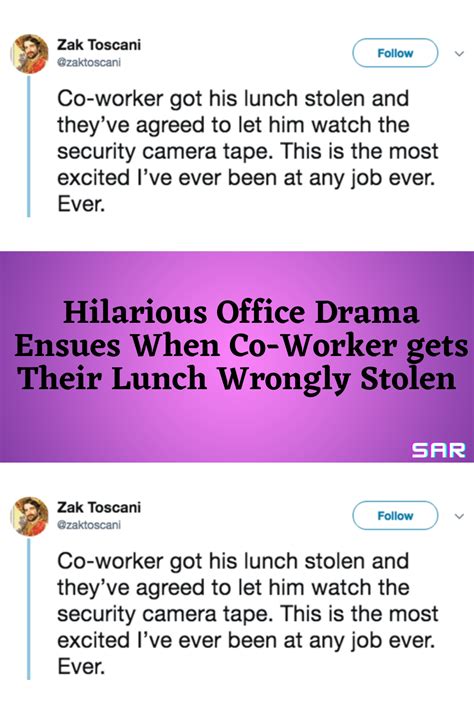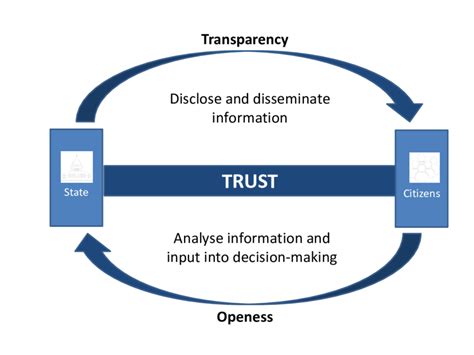
Many popular money-saving strategies can backfire, ultimately costing consumers more in the long run, according to a recent analysis of common frugal habits. From buying in bulk to neglecting preventative maintenance, several seemingly economical practices can lead to significant financial losses.
The pursuit of frugality, often seen as a virtue, can inadvertently lead to financial pitfalls if not approached with careful consideration. Several well-intentioned cost-cutting measures, frequently touted as savvy money-saving tips, can ironically drain wallets. A recent study and expert analysis highlight these “frugal fails,” exposing the counterintuitive ways that certain habits can result in increased expenses.
Bulk Buying Blunders
One of the most common frugal strategies is buying in bulk. The allure of lower unit prices often drives consumers to purchase large quantities of goods, especially non-perishable items. However, this approach can lead to significant waste if the products expire before they can be used. “Buying in bulk only makes sense if you can actually use everything you buy before it goes bad,” says personal finance expert Sarah Miller. For instance, purchasing a giant container of spices might seem economical, but if the spices lose their flavor before you use them, you’ve essentially thrown money away. Similarly, bulk purchases of perishable items like fruits and vegetables can quickly turn into a costly mistake if they spoil before consumption. Effective bulk buying requires a realistic assessment of consumption rates and storage capabilities.
Discount Traps
The allure of discounts and sales can also lead to overspending. Retailers often use promotions to entice customers to buy items they don’t need or wouldn’t normally purchase. “It’s easy to get caught up in the excitement of a sale and buy things you don’t really need,” warns Miller. This impulse buying can quickly negate any savings achieved by the discount. Furthermore, discount stores sometimes offer lower quality versions of products, which may not last as long and require more frequent replacement. A seemingly cheap appliance, for example, might break down sooner than a more expensive, higher-quality model, ultimately costing more in the long run due to repair or replacement costs. It’s crucial to evaluate whether a discounted item truly represents a good value by considering its quality, durability, and necessity.
DIY Disasters
Do-it-yourself (DIY) projects are often seen as a way to save money on home repairs and improvements. While some DIY projects can indeed be cost-effective, others can turn into expensive disasters if not executed properly. “Taking on a project you’re not qualified for can end up costing you more in the long run,” explains home improvement specialist John Davis. For example, attempting to fix a plumbing issue without the necessary skills can lead to water damage and costly repairs by a professional plumber. Similarly, improper electrical work can create safety hazards and require expensive corrections. Before embarking on a DIY project, it’s essential to honestly assess your skills and knowledge, and to consider whether the potential savings outweigh the risk of making costly mistakes. Sometimes, hiring a professional is the more economical choice in the long run.
Neglecting Preventative Maintenance
Another common frugal fail is neglecting preventative maintenance on essential items like cars and appliances. While it may seem like a way to save money in the short term, delaying or skipping maintenance can lead to more significant problems and higher repair costs down the road. “Skipping routine maintenance on your car or appliances can lead to major breakdowns and expensive repairs,” says mechanic Tom Williams. For example, neglecting regular oil changes can cause engine damage, while failing to clean the lint trap in a dryer can lead to a fire hazard. Investing in preventative maintenance can extend the lifespan of your belongings and prevent costly repairs or replacements.
Cheap Isn’t Always Cheerful
Opting for the cheapest option is a common frugal strategy, but it can often backfire. Lower-priced items are often made with cheaper materials and inferior craftsmanship, which can result in shorter lifespans and the need for frequent replacements. “Buying the cheapest option isn’t always the most cost-effective in the long run,” warns consumer advocate Lisa Green. For example, buying cheap clothing might seem like a good deal, but if the clothes fall apart after a few washes, you’ll end up spending more money replacing them. Similarly, buying cheap furniture might save money upfront, but it may not be as comfortable or durable as a higher-quality piece. It’s important to consider the long-term value and durability of a product, rather than simply focusing on the initial price.
Cutting Insurance Coverage
Reducing insurance coverage to save on premiums is another risky frugal strategy. While it may seem like a way to save money in the short term, it can expose you to significant financial risk in the event of an accident or disaster. “Cutting back on insurance coverage to save money is a dangerous gamble,” says insurance expert Michael Brown. For example, reducing your car insurance coverage to the bare minimum might save you a few dollars a month, but it could leave you financially vulnerable if you’re involved in an accident and cause significant damage or injuries. Similarly, reducing your homeowner’s insurance coverage could leave you underinsured in the event of a fire or other disaster. It’s important to carefully assess your insurance needs and choose coverage levels that adequately protect you from potential financial losses.
Skimping on Healthcare
Delaying or avoiding medical care to save money is a particularly dangerous frugal fail. While healthcare costs can be a significant burden, neglecting your health can lead to more serious and costly problems down the road. “Putting off medical care to save money can have serious consequences for your health and your wallet,” warns Dr. Susan Jones. For example, delaying a visit to the doctor for a minor ailment can allow it to develop into a more serious and expensive condition. Similarly, skipping routine dental checkups can lead to cavities and gum disease, which can require costly treatments. Investing in preventative healthcare can help you stay healthy and avoid more expensive medical treatments in the future.
Coupon Obsession
While coupons can be a legitimate way to save money, becoming overly obsessed with them can lead to wasteful spending. “Chasing coupons can lead you to buy things you don’t need just because they’re on sale,” says budgeting expert David Lee. For example, you might buy a product simply because you have a coupon for it, even if you wouldn’t normally buy it. This can lead to stockpiling items you don’t need and wasting money on products that go unused. It’s important to use coupons strategically and only buy items that you would normally purchase.
Forgoing Professional Advice
Trying to handle complex financial matters on your own to save money on professional fees can also be a costly mistake. While there are many resources available to help you manage your finances, seeking professional advice from a financial advisor, accountant, or lawyer can be invaluable in certain situations. “Trying to handle complex financial matters on your own can lead to costly mistakes,” warns financial advisor Emily Carter. For example, making poor investment decisions or failing to properly plan for retirement can have significant financial consequences. Similarly, trying to navigate complex legal issues without the help of a lawyer can lead to unfavorable outcomes. Investing in professional advice can help you make informed decisions and avoid costly errors.
Ignoring Energy Efficiency
Failing to invest in energy-efficient appliances and home improvements is another common frugal fail. While energy-efficient products may have a higher upfront cost, they can save you money on your utility bills over the long term. “Investing in energy-efficient appliances and home improvements can pay off in the long run,” says energy efficiency expert Robert Green. For example, replacing an old refrigerator with an energy-efficient model can save you hundreds of dollars per year on your electricity bill. Similarly, insulating your home can reduce your heating and cooling costs.
Avoiding Debt Strategically
While debt avoidance is generally a sound financial principle, avoiding all debt at all costs can sometimes be detrimental. Strategic use of debt, such as for education or a home purchase, can be beneficial in the long run. “Avoiding all debt isn’t always the best strategy,” says financial planner Jane Smith. “Sometimes taking on debt for investments that appreciate in value, like a home, or for education that increases your earning potential, can be a smart financial move.” The key is to carefully consider the terms of the debt, your ability to repay it, and the potential return on investment.
Cheap Food Choices
Consistently opting for the cheapest food options can negatively impact health and, consequently, finances in the long term. Processed foods and those with low nutritional value can lead to health problems that result in medical bills and reduced productivity. “Your health is an investment, not an expense,” says nutritionist Maria Lopez. “Choosing nutritious foods, even if they cost a bit more upfront, can prevent costly health issues down the road.”
Over-Reliance on Free Entertainment
While free entertainment options like library books and public parks are valuable, solely relying on them can lead to a lack of enriching experiences and missed opportunities. Investing in occasional concerts, movies, or travel can enhance personal growth and well-being, which indirectly benefits financial health by improving productivity and overall life satisfaction. “Life is more than just saving money,” advises psychologist Tom Evans. “Experiences contribute to your overall well-being, which can positively impact your financial success.”
The Frugal Paradox
The underlying issue with these “frugal fails” is a lack of long-term perspective and a focus on immediate cost savings without considering the potential consequences. True frugality involves making informed decisions that balance cost savings with value, quality, and long-term benefits. It requires careful planning, research, and a willingness to invest in things that will ultimately save you money in the long run.
By avoiding these common frugal fails, consumers can develop more sustainable and effective money-saving strategies that truly benefit their financial well-being. It’s about being smart with your money, not just cheap. A balanced approach, focusing on value, quality, and long-term benefits, is the key to successful frugality.
The Psychology Behind Frugal Fails
Several psychological factors contribute to these frugal fails. One is the “sunk cost fallacy,” which leads people to continue investing in a failing project or product simply because they have already invested time and money into it. For example, someone who buys a cheap appliance that breaks down quickly might continue to repair it rather than replace it with a more reliable model, simply because they don’t want to admit that their initial investment was a mistake.
Another factor is the “present bias,” which leads people to prioritize immediate gratification over long-term benefits. This can lead to impulsive purchases and a failure to plan for the future. For example, someone with a present bias might choose to buy a cheap item now rather than save up for a higher-quality item that will last longer.
Developing a Sustainable Frugal Mindset
To avoid these frugal fails, it’s important to develop a sustainable frugal mindset that focuses on long-term value and benefits. This involves:
-
Planning and Budgeting: Creating a budget and sticking to it can help you avoid impulsive purchases and prioritize your spending.
-
Research and Comparison Shopping: Taking the time to research products and compare prices can help you find the best value for your money.
-
Quality over Quantity: Investing in higher-quality items that will last longer can save you money in the long run.
-
Preventative Maintenance: Taking care of your belongings can extend their lifespan and prevent costly repairs.
-
Long-Term Perspective: Considering the long-term costs and benefits of your decisions can help you make smarter financial choices.
-
Mindful Consumption: Being aware of your consumption habits and avoiding unnecessary purchases can help you save money and reduce waste.
-
Seeking Advice: Consulting with financial professionals can help you make informed decisions and avoid costly mistakes.
Beyond the Individual: Societal Implications
The phenomenon of “frugal fails” extends beyond individual financial well-being and has broader societal implications. A culture that promotes unsustainable consumption patterns, driven by the pursuit of cheap goods and fleeting discounts, can contribute to environmental degradation and economic instability.
-
Environmental Impact: The constant cycle of buying cheap, disposable goods leads to increased waste and pollution. Manufacturing these goods often involves environmentally damaging processes, and their short lifespan means they end up in landfills more quickly.
-
Economic Instability: A focus on cheap labor and materials can lead to exploitation of workers and unsustainable supply chains. This can create economic instability in developing countries and contribute to income inequality.
-
Decline in Quality: The pressure to produce goods at the lowest possible cost can lead to a decline in quality and durability. This not only wastes consumers’ money but also undermines the value of craftsmanship and long-lasting products.
Moving Towards a More Sustainable Economy
Addressing the issue of “frugal fails” requires a shift towards a more sustainable economy that prioritizes value, quality, and long-term benefits. This involves:
-
Promoting Sustainable Consumption: Encouraging consumers to make informed purchasing decisions that consider the environmental and social impact of their choices.
-
Investing in Education: Educating consumers about the true cost of cheap goods and the benefits of investing in quality and durability.
-
Supporting Local Businesses: Supporting local businesses that prioritize ethical labor practices and sustainable production methods.
-
Advocating for Policy Changes: Advocating for policies that promote sustainable consumption and production, such as extended producer responsibility and eco-labeling.
The Future of Frugality
The concept of frugality is evolving. It’s no longer just about saving money at all costs but about making smart, sustainable choices that benefit both individuals and society. The future of frugality lies in embracing a more holistic approach that considers the long-term consequences of our consumption habits and prioritizes value, quality, and sustainability. By avoiding the common “frugal fails” and adopting a more mindful approach to spending, we can create a more financially secure and environmentally sustainable future.
Case Studies
To illustrate the impact of frugal fails, consider the following case studies:
-
The “Bulk Buyer”: Sarah, a young professional, was enticed by bulk discounts on groceries. She bought large quantities of produce, only to find that much of it spoiled before she could use it. This resulted in her throwing away a significant portion of her purchase, negating any potential savings.
-
The “DIY Enthusiast”: John, a homeowner, attempted to repair a leaky faucet himself to save money on a plumber. However, he accidentally damaged the plumbing system, causing a major water leak and requiring expensive professional repairs.
-
The “Insurance Cutter”: Maria, a single mother, reduced her car insurance coverage to save on premiums. Unfortunately, she was involved in an accident and found herself underinsured, facing significant out-of-pocket expenses for vehicle repairs and medical bills.
-
The “Cheap Appliance Shopper”: David, a recent graduate, purchased a cheap washing machine to save money. However, the machine broke down after only a year, requiring him to purchase a new one, effectively doubling his initial expense.
These case studies highlight the real-world consequences of “frugal fails” and the importance of making informed financial decisions.
Long-Term Financial Planning and Frugality
Frugality should be viewed as a component of a comprehensive long-term financial plan. It’s not just about cutting costs today; it’s about building a secure financial future. This involves:
-
Setting Financial Goals: Defining your financial goals, such as retirement, homeownership, or debt repayment, can help you prioritize your spending and make informed financial decisions.
-
Creating a Savings Plan: Developing a savings plan that allocates a portion of your income to savings and investments can help you achieve your financial goals.
-
Managing Debt Wisely: Avoiding unnecessary debt and managing existing debt effectively can free up more money for savings and investments.
-
Investing for the Future: Investing your money wisely can help it grow over time and provide you with a secure financial future.
-
Regularly Reviewing Your Plan: Regularly reviewing your financial plan and making adjustments as needed can help you stay on track and achieve your goals.
Frugality, when practiced strategically and in conjunction with a comprehensive financial plan, can be a powerful tool for building wealth and achieving financial security.
Conclusion
The pursuit of frugality, while often commendable, can be fraught with pitfalls if not approached with careful planning and a long-term perspective. Many seemingly economical habits, such as bulk buying, chasing discounts, and neglecting preventative maintenance, can ironically drain wallets. By understanding the potential consequences of these “frugal fails” and adopting a more sustainable and mindful approach to spending, consumers can develop more effective money-saving strategies and build a more secure financial future. The key is to focus on value, quality, and long-term benefits, rather than simply chasing the lowest price. True frugality is about being smart with your money, not just cheap.
Frequently Asked Questions (FAQ)
1. Why is buying in bulk sometimes a bad idea?
Buying in bulk can lead to waste if you can’t use the products before they expire, resulting in financial loss. Factors like storage space and actual consumption rate should be considered before making such purchase decisions.
2. How can discounts become a “frugal fail”?
Discounts can entice you to buy items you don’t need, leading to overspending. Additionally, discounted items might be of lower quality, requiring more frequent replacements and ultimately costing more.
3. When should you avoid DIY projects to save money?
Avoid DIY projects when you lack the necessary skills or knowledge. Mistakes can lead to costly repairs or even safety hazards, making professional help the more economical option in the long run.
4. What are the risks of cutting insurance coverage to save money?
Reducing insurance coverage can expose you to significant financial risk in case of accidents, disasters, or other unforeseen events. The savings in premiums may not outweigh the potential costs of being underinsured.
5. How does neglecting preventative maintenance end up costing more?
Skipping routine maintenance on cars, appliances, or homes can lead to major breakdowns and expensive repairs. Preventative maintenance extends the lifespan of your belongings and prevents costly damages.









